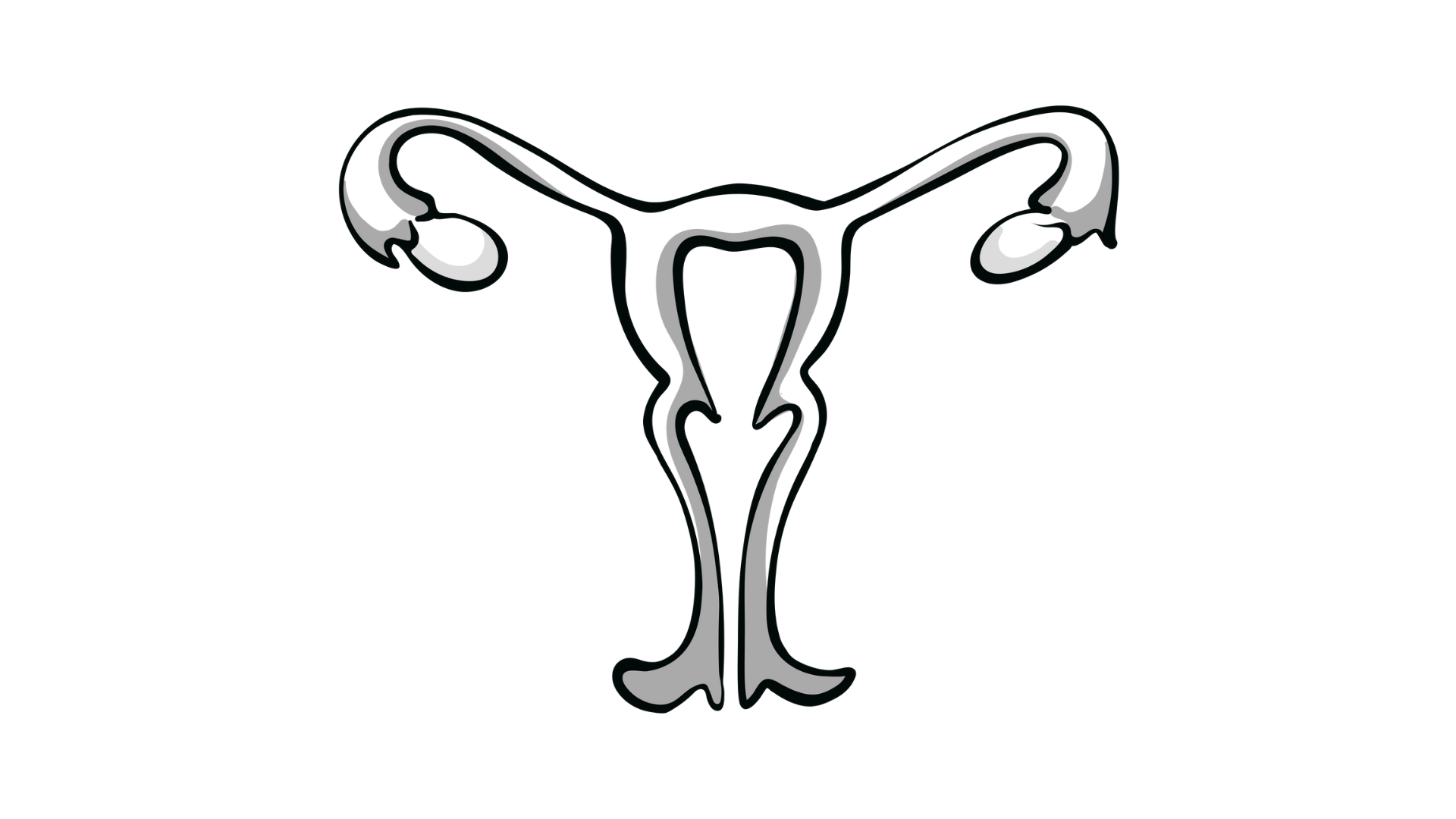Seeking Optimal Combinations and Treatment Sequencing in Cervical Cancer
Chemoradiation with platinum-based chemo is standard for locally advanced cervical cancer, but adverse events drive exploration of immunotherapy and optimal treatment sequences.

IN PATIENTS WITH locally advanced cervical cancer, the emergence of chemoradiation that uses platinum- based chemotherapy has been the treatment of choice for patients with stage IB3, II, III, and IVA disease, according to results of randomized clinical trials.1 Concurrent use of cisplatin, in particular, has led to a 30% to 50% decrease in the risk of death compared with radiation therapy alone.2,3
When cisplatin is not indicated, other recommended options are capecitabine/mitomycin, gemcitabine, and paclitaxel.1
Although chemoradiation is tolerated, acute and long-term adverse events (AEs) have been reported, spurring the evaluation of novel therapies, including immunotherapy. In addition, trials that establish optimal treatment sequences were also recently explored. Several clinical trial results emerged in 2024 and are highlighted in this report.
KEYNOTE-A18 Trial
The phase 3 ENGOT-cx11/GOG-3047/KEYNOTE-A18 study (NCT04221945) evaluated pembrolizumab (Keytruda) combined with chemoradiotherapy (CRT) in patients with newly diagnosed, previously untreated, high-risk locally advanced cervical cancer.4 Findings demonstrated statistically significant and clinically meaningful improvements in survival vs CRT alone. Further, these benefits were observed when pembrolizumab was continued as monotherapy, investigators reported.
At a median follow-up of 29.9 months (range, 12.8-43.0), the 36-month overall survival (OS) rate was 82.6% (95% CI, 78.4%-86.1%) with pembrolizumab plus CRT vs 74.8% (95% CI, 70.1%-78.8%) with CRT alone. The median OS was not reached in either arm (HR, 0.67; 95% CI, 0.50-0.90; 1-sided P = .0040). Notably, the HR for death was under 1 in all protocol-specified subgroups, except for those 65 years and older (HR, 1.35; 95% CI, 0.58-3.11).4
“The efficacy of immunotherapy, in combination with radiation, pushed us to explore the possibility of combining [the 2 modalities] in a potentially curative setting,” lead author Domenica Lorusso, MD, PhD, said in an interview with Targeted Therapies in Oncology. Lorusso is a professor of obstetrics and gynaecology, Humanitas University, and director, Gynecological Oncology Unit, Humanitas Hospital San Pio X, in Milan, Italy.
“The trial had 2 primary end points, progression-free survival [PFS] and [OS], which were analyzed in a hierarchical way,” Lorusso said. First, investigators analyzed PFS; if it was positive, the entire statistical significance level was used to analyze OS. If the PFS was not statistically significant, the OS analysis would not be considered for efficacy.
In the trial, 1060 treatment-naive patients with high-risk (International Federation of Gynecology and Obstetrics [FIGO] 2014 stage IB2-IIB with node-positive disease or stage III-IVA), locally advanced, histologically confirmed cervical cancer were randomly assigned to receive either 200 mg pembrolizumab every 3 weeks plus concurrent CRT followed by 400 mg pembrolizumab or placebo every 6 weeks for 15 cycles plus CRT followed by placebo.4
Eligible patients were required to have an ECOG performance status of 0 or 1, evaluable disease by RECIST 1.1 criteria, acceptable organ function, and available tissue for sampling. They could not have had other histological cervical cancer subtypes, had FIGO 2014 stage IVB disease, undergone prior hysterectomy, or previously received systemic treatment, immunotherapy, definitive surgery, or radiation.4
An important factor Lorusso emphasized is that as clinicians, “we should provide good-quality radiotherapy to our patients. More than 80% of patients receive modern, imageguided radiotherapy.” Quality radiotherapy is defined as precise, minimizes damage to healthy tissue, and delivers the correct dose of radiation to the tumor, thus increasing local control and potentially survival.5
Ikonacolor (woman), Diogenes (organs), pro500 (Geometric abstract background with connected line and dots), SappawatS (Abstract medical background), kras99 (hexagon pattern), Jezper (cancer cells) – stock.adobe.com

Regarding AEs, 78% (413 of 528) of patients in the pembrolizumab-CRT group and 70% (371 of 530) in the placebo-CRT group had a grade 3 or higher AE. The most common AEs reported were anemia, decreased white blood cell count, and decreased neutrophil count. Investigators reported that potentially immune-mediated AEs occurred in 39% (206 of 528) of patients in the pembrolizumab- CRT group and 17% (90 of 530) of patients in the placebo-CRT group.4
“The toxicity profile of the combination of pembrolizumab and radiotherapy was quite good, and only a few patients discontinued the treatment because of an [AE]. Modern image-guided radiotherapy makes a difference,” Lorusso explained. “We were worried that diarrhea or colitis could lead to erratic toxicity from the combination, but that was not the case,” she continued.
Regulatory Actions
US and European regulatory bodies have approved the pembrolizumab and CRT combination. In the US, efficacy results from KEYNOTE-A18 led to the combination’s approval for patients with FIGO 2014 stage III to IVA cervical cancer.6
The FDA noted in its news release6 that in a subgroup analysis of patients with FIGO 2014 stage III to IVA disease, the PFS HR was 0.59 (95% CI, 0.43-0.82) and that 21% of patients in the treatment arm vs 31% of patients in the control arm experienced a PFS event. In contrast, for patients with FIGO 2014 stage IB2 to IIB disease, the PFS HR estimate was 0.91 (95% CI, 0.631.31), indicating that the PFS improvement in the overall population was primarily attributed to patients with FIGO 2014 stage III to IVA disease.
Lorusso noted that patients with earlier- stage disease still benefited from the combination, calling the decision to focus on later- stage disease “a real limitation, and it is a pity.” Lorusso expects to present the final analysis in 2025, with a potentially higher number of events and even better results, with the hope that regulatory authorities might reconsider their decision.
INTERLACE Trial
The phase 3 international, multicenter INTERLACE trial (NCT01566240) evaluated whether adding a short course of induction chemotherapy before CRT is more effective than CRT alone.7 Eligible patients had stage IB1 disease with nodal involvement or stage IB2, IIA, IIB, IIIB, or IVA disease. OS and PFS were the primary end points; secondary end points were AEs, time to next anticancer therapy, and health-related quality of life.
Overall, 1493 patients were assessed for eligibility, and 500 patients were randomly assigned 1:1 to receive induction chemotherapy with CRT (treatment arm) vs CRT alone (control arm). In the induction chemotherapy with CRT group of 250 patients, 211 (84%) completed 6 weeks of induction chemotherapy, and 230 (92%) completed 5 weeks.7
The study revealed a significant improvement in survival rates for patients with locally advanced cervical cancer using a chemotherapy regimen administered before standard CRT. The research, with a median follow-up of 67 months, showed a substantial increase in PFS and OS.
The study included patients who were a median age of 46 years (range, 24-78), with the majority diagnosed with FIGO (2008) stage IIB disease (approximately 70% in both treatment and control groups) and squamous cell histology (82% in both groups). Using the FIGO 2018 staging system, approximately half of the patients were classified as stage I or II, with a significant proportion (approximately 40%) classified as stage IIIC1.7
Investigators reported that patients receiving induction chemotherapy with CRT experienced a 35% relative reduction in the risk of disease progression or death (HR, 0.65; 95% CI, 0.46-0.91, P = .013). Three-year PFS rates were 75% for the induction chemotherapy group and 72% for the CRT alone group. Five-year rates were 72% and 64%, respectively.7

This regimen also led to a 40% relative reduction in the risk of death (HR, 0.60; 95% CI, 0.40-0.91; P = .015). Three-year OS rates were 85% for the induction chemotherapy group and 80% for the CRTalone group. Five-year rates were 80% and 72%, respectively.7
This translates to an 11 percentage point improvement in 5-year PFS and a 10 percentage point improvement in 5-year OS. Researchers highlighted this as the first substantial OS improvement for this patient population in over 2 decades, since the introduction of concomitant cisplatin.7
The induction chemotherapy regimen consisted of a short-course, once-a-week dose of carboplatin and paclitaxel administered immediately before CRT.
Although the new regimen proved effective across all subgroups analyzed, investigators acknowledged the limited representation of patients with FIGO 2008 stage IIIB and IVA disease (14%) and the exclusion of those with para-aortic nodal involvement. However, using the FIGO 2018 staging system, nearly half of the patients would be classified as stage III or IV.7
As expected, hematological toxicity, primarily neutropenia, was more frequent in the induction chemotherapy group, particularly during CRT.7
Researchers noted the importance of proper scheduling to avoid delays in radiotherapy. In centers with long wait times for radiotherapy, induction chemotherapy should be scheduled only after radiotherapy dates are confirmed to prevent gaps between treatments.
Investigators recommended that future research should focus on identifying biomarkers for treatment response.7
Although the findings from the trial were encouraging, Lorusso expressed some concern. “My concern is the delay in CRT, which has been shown to be curative in 75% of patients. We need to be careful when using induction chemotherapy prior to CRT, and we need to be sure that what we’re adding does not jeopardize the efficacy of chemoradiation,” Lorusso said.
BEATcc Trial
In the metastatic setting, bevacizumab (Avastin) plus chemotherapy has been established as a standard first-line therapy. The addition of the immune checkpoint inhibitor atezolizumab (Tecentriq), however, led to improvements in PFS and OS, according to results of the phase 3 BEATcc trial (NCT03556839).8
A total of 410 patients with metastatic (stage IVB), recurrent, or persistent cervical cancer that was not amenable to surgery or radiation were enrolled and randomly assigned 1:1 to receive standard therapy of 50 mg/m2 of cisplatin, 175 mg/m2 of paclitaxel, and 15 mg/kg of bevacizumab with or without 1200 mg of atezolizumab.8
Investigators reported a median PFS of 13.7 months (95% CI, 12.3-16.6) for the treatment arm vs 10.4 months (95% CI, 9.7-11.7) in the control arm (HR, 0.62; 95% CI, 0.490.78; P < .0001).8
At the interim OS analysis, the median OS was 32.1 months (95% CI, 25.3-36.8) for the treatment arm vs 22.8 months (95% CI, 20.328.0) for the control arm (HR, 0.68; 95% CI, 0.52-0.88; P = .0046).8
FDA Approval
A noteworthy approval in the cervical cancer setting was the approval of tisotumab vedotin-tftv (Tivdak) in April 2024.9 The monoclonal antibody had previously received an accelerated approval for the indication.10
The full approval was based on findings from the phase 3 innovaTV 301 trial (NCT04697628) in patients with recurrent or metastatic cervical cancer.11
According to investigators, treatment with tisotumab led to a 30% reduction in the risk of death vs investigator’s choice of chemotherapy as a second- or third-line treatment among those in the intent-to-treat population.
A total of 502 patients underwent random assignment (253 were assigned to the tisotumab vedotin group and 249 to the chemotherapy group), and the groups were similar with respect to demographic and disease characteristics.
The median OS was 11.5 months (95% CI, 9.8-14.9) at a median follow-up of 10.8 months (95% CI, 10.3-11.6) with tisotumab compared with 9.5 months (95% CI, 7.9-10.7) with chemotherapy (HR, 0.70, 95% CI, 0.54-0.89; P = .0038). At 12 months, the OS rates observed between the 2 arms were 48.7% and 35.3%, respectively.11
The median PFS was 4.2 months (95% CI, 4.0-4.4) compared with 2.9 months (95% CI, 2.6-3.1) with chemotherapy (HR, 0.67; 95% CI, 0.54-0.82; P < .0001). Further, the PFS rates at 6 months were 30.4% and 18.9%, respectively, with tisotumab and chemotherapy.11
The confirmed objective response rate was 17.8% in the tisotumab vedotin group and 5.2% in the chemotherapy group (OR, 4.0; 95% CI, 2.1-7.6; 2-sided P < .001).11
Patients were randomly assigned 1:1 to receive tisotumab vedotin monotherapy (2.0 mg/kg of body weight every 3 weeks) or investigator’s choice of chemotherapy (topotecan, vinorelbine, gemcitabine, irinotecan, or pemetrexed). The primary end point was OS.11
Although the future is bright and meeting unmet needs is encouraging, Lorusso did emphasize that cervical cancer is preventable. “We have primary prevention through the HPV [human papillomavirus] vaccine, and we have secondary prevention available through screening. So, the maximum effort should be put into prevention of the disease,” Lorusso concluded.
REFERENCES
1. NCCN. Clinical Practice Guidelines in Oncology. Cervical cancer, version 1.2025. Accessed January 9, 2025. https://acrobat.adobe.com/id/urn:aaid:sc:US:dc41eb14-ef60-45d1-b445-3af0aa4625a9
2. Rose PG, Ali S, Watkins E, et al; Gynecologic Oncology Group. Long-term follow-up of a randomized trial comparing concurrent single agent cisplatin, cisplatin-based combination chemotherapy, or hydroxyurea during pelvic irradiation for locally advanced cervical cancer: a Gynecologic Oncology Group Study. J Clin Oncol. 2007;25(19):2804-2810. doi:10.1200/JCO.2006.09.4532
3. Stehman FB, Ali S, Keys HM, et al. Radiation therapy with or without weekly cisplatin for bulky stage 1B cervical carcinoma: follow-up of a Gynecologic Oncology Group trial. Am J Obstet Gynecol. 2007;197(5):503.e1-503.e6. doi:10.1016/j.ajog.2007.08.003
4. Lorusso D, Xiang Y, Hasegawa K, et al; ENGOT-cx11/GOG-3047/KEYNOTE-A18 investigators. Pembrolizumab or placebo with CRT followed by pembrolizumab or placebo for newly diagnosed, high-risk, locally advanced cervical cancer (ENGOT-cx11/GOG-3047/KEYNOTE-A18): overall survival results from a randomised, double-blind, placebo-controlled, phase 3 trial. Lancet. 2024;404(10460):1321-1332. doi:10.1016/S0140-6736(24)01808-7
5. Knoll MA, Jagsi R, Rosenzweig K. Focal radiation therapy for cancer. JAMA Oncol. 2019;5(3):442. doi:10.1001/jamaoncol.2018.5868
6. FDA approves pembrolizumab with CRT for FIGO 2014 Stage III-IVA cervical cancer. FDA. January 12, 2024. Accessed January 9, 2025. https://tinyurl.com/mvf45wrh
7. McCormack M, Eminowicz G, Gallardo D, et al; INTERLACE investigators. Induction chemotherapy followed by standard CRT versus standard CRT alone in patients with locally advanced cervical cancer (GCIG INTERLACE): an international, multicentre, randomised phase 3 trial. Lancet. 2024;404(10462):1525-1535. doi:10.1016/S0140-6736(24)01438-7
8. Oaknin A, Gladieff L, Martínez-García J, et al; ENGOT-Cx10–GEICO 68-C–JGOG1084–GOG-3030 Investigators. Atezolizumab plus bevacizumab and chemotherapy for metastatic, persistent, or recurrent cervical cancer (BEATcc): a randomised, open-label, phase 3 trial. Lancet. 2024;403(10421):31-43. doi:10.1016/S0140-6736(23)02405-4
9. FDA approves tisotumab vedotin-tftv for recurrent or metastatic cervical cancer. FDA. April 29, 2024. Accessed January 10, 2025. https://tinyurl.com/yv6x9b4r
10. FDA grants accelerated approval to tisotumab vedotin-tftv for recurrent or metastatic cervical cancer. FDA. Updated September 21, 2021. Accessed January 10, 2025. https://tinyurl.com/2ruffhd5
11. Vergote I, González-Martín A, Fujiwara K, et al; innovaTV 301/ENGOT-cx12/GOG-3057 Collaborators. Tisotumab vedotin as second- or third-line therapy for recurrent cervical cancer. N Engl J Med. 2024;391(1):44-55. doi:10.1056/NEJMoa2313811
Westin Discusses Logistical and Tolerability Challenges in Metastatic Cervical Cancer
April 21st 2025During a live event, Shannon N. Westin, MD, MPH, and participants discussed their experience treating patients with progressive cervical cancer and the toxicity profile of tisotumab vedotin.
Read More












